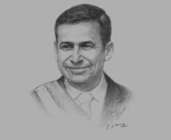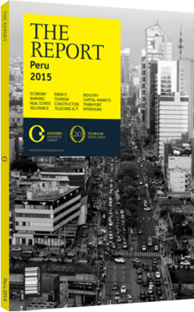President Ollanta Moisés Humala Tasso: Interview
 Ollanta Humala
Ollanta Humala Interview: President Ollanta Moisés Humala Tasso
How is your administration striking a balance between broad social inclusion, on the one hand, and wealth creation policies, on the other?
OLLANTA MOISÉS HUMALA TASSO: In order to reduce poverty in the country it is necessary to have complementary policies. Over the past 10 years, average GDP growth has been 6.4%, which has had the effect of reducing the poverty level from 59% in 2004 to 24% 2013, which is below the 28% average for Latin America.
Economic growth works to lower poverty in two ways. First, growth generates higher-quality employment opportunities – between 2004 and 2013, job quality has been multiplied by a factor of three. The second effect of growth is the increased generation of public resources for social policy. In fact, investment in health and education has also tripled over the past decade. This shows that economic growth is crucial to lowering poverty and we need to ensure that this growth is stable in the mid and long terms.
What rates of poverty reduction do you envision the country will achieve in the coming decade?
HUMALA: The government has created the Ministry of Development and Social Inclusion to focus on poverty reduction. Some of the main targets for 2016 are reducing extreme poverty to 5%; chronic malnutrition for kids below the age of five to 10%; and reducing the poverty gap to 6%. There is also a Strategic National Development Plan developed by the Centre for Strategic Development, based on lowering poverty levels and inequalities.
The objective is to lower poverty levels by 2021 from the current 24% to 10%. We also aim to reach 0.35 on the Gini Coefficient that measures income distribution. As for gender equality, the goal is to lower differences between salaries to 1.3 and increase the ratio of high-ranked female public servants to 50%. Regarding health, the key objectives are to lower infant mortality to 15 per 1000 births and have 100% health care coverage, be it public or private.
What needs to be done in order to address the $90bn infrastructure deficit?
HUMALA: Though there have been some important strides forward, Peru still lacks big infrastructure. Regarding transport, investment in projects has been increasing due to public private partnerships. With this method, between 2012 and 2014, concessions for two roads, one port and one airport have been awarded, representing a total of $1.5bn.
Over the next two years other projects will see the light, such as two more roads (the Longitudinal de la Sierra), a waterway, the third block of regional airports and the development of a logistics centre for the Callao Port in Lima. This will help reduce logistics costs and improve service quality, thus making the country more competitive. To these projects, designed by the government, we have to add those coming from private initiative. Aiming to invigorate the sector, a new regulation was approved in May 2014 for projects co-financed with the public sector. This has had an immediate effect, with 65 projects for private initiative submitted in August 2014.
The Pacific Alliance represents a huge opportunity. In which areas can Peru most benefit?
HUMALA: The countries that form the Pacific Alliance have every intention of reaching a high degree of economic integration. We are currently working at a technical level to generate initiatives that will help maximise the benefits from the implementation of the treaty. The economic block that the Pacific Alliance represents provides a great opportunity not only with third parties, but also to strengthen intraalliance commercial relations and investments. Chile, Colombia, Mexico and Peru have integrated their economies with the world’s biggest markets. And through the alliance we face both the challenge and opportunity to consolidate and complement our exports to markets such as Asia or the EU. The steps taken towards increasing national productivity and competitiveness within each country’s economy will be crucial to creating supply chains inside the alliance and thus becoming much more efficient overall.
Why did foreign direct investment (FDI) drop 17% in 2013 and how can this decline be addressed?
HUMALA: In 2013, Peru received $10.2bn in FDI, which represented a 17% decrease from 2012. In the last decade the country has attracted an unprecedented amount of FDI, much of which came from big re-investments by mining companies. In 2013, international mining companies added up to $9.92bn, 18% less than the previous year. This motivated a drop of 41% of the re-investment component of FDI. This drop in earnings can be explained by two factors, the price drop worldwide of copper and gold, which translated into less production of gold, and also the conflicts with communities and other groups opposed to mining projects, such as the one that affected the Yanacocha mine that was stalled for several months in 2013. This being said, it has to be taken into account that the amount of FDI attracted in 2013 is the second-highest in history and although there was a drop in earnings, total investments in the mining sector grew 14%.
How will megaprojects like the Lima Metro’s Line 2 and the Sur Peruano Pipeline sustain growth?
HUMALA: Both projects will play a major role in increasing competitiveness and promoting diversification. The Sur Peruano Pipeline – representing investments of around $3.6bn – will have a great impact on the levels of competitiveness of the southern part of the country by making energy more affordable. It will also set the stage for the development of a petrochemicals industry, which will generate investment and employment in the region.
Line 2, and indeed all six lines that make up the metro system, aims to improve the capacity and quality of mass transit in metropolitan Lima. During the development phase, this project will require significant levels of investment from both the public and private sectors and will help invigorate the GDP of the construction and infrastructure industries. During the operational phase, it will help improve productivity by decreasing transport times of the economically active population. By 2016 – it being a high priority project – the government will have awarded the Line 3 contract and will have requested design studies for Line 4 as well.
Following the agenda of improving competitiveness, a project that will be a priority over the next few months is the Logistics Aggregation Zone. Though in terms of investments it is not a megaproject, its implementation is crucial to improving the competitiveness of the Port of Callao, Peru’s most important site. Over the past few years, the volume of trade handled at the port has increased rapidly, mainly due to trade agreements, and although port infrastructure has been upgraded and expanded, there remains a lot to be done to improve logistics.
How well has the Prior Consultation Law succeeded at involving indigenous peoples?
HUMALA: From a government point of view, the implementation of the law has been slow due to the fact that those laws needed to be made as clear as possible. The Ministry of Culture does not have a national log identifying all the indigenous people. This makes it difficult to identify which communities are native in areas where projects are involved.
The government believes that the Prior Consultation Law is the right tool to accelerate projects and involve communities in decisions. The law has raised expectations in the country’s native communities and they are demanding social and economic needs as lawful rights, so the government has a responsibility to meet these demands. The focus needs to be on training communities to be self sufficient and educating private firms on their social responsibilities.
You have reached the limit of premium articles you can view for free.
Choose from the options below to purchase print or digital editions of our Reports. You can also purchase a website subscription giving you unlimited access to all of our Reports online for 12 months.
If you have already purchased this Report or have a website subscription, please login to continue.

